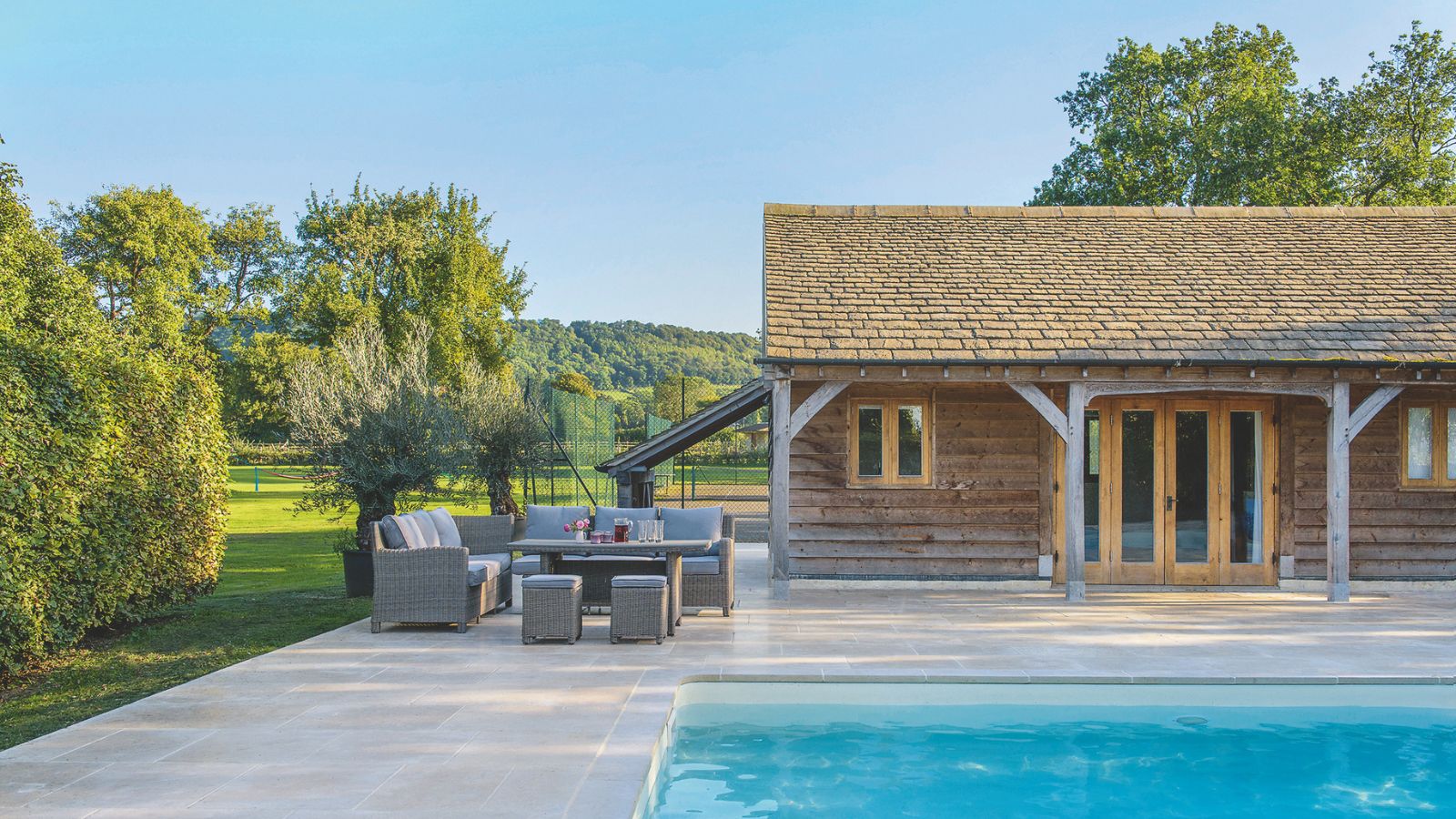I can't change my dated rental kitchen but this simple countertop addition instantly makes it look so much better
I have no plans to re-paint or update my rental kitchen in any way, but its faded aesthetic needed a bit of help. This countertop addition has done the job

In my old house, the one I thought was a forever home, my kitchen was my pride and joy. Green-tinged granite counter, hand-crafted oak cabinets, and a terracotta pantry. Big windows, sun streaming in. I tried as much as possible to keep the countertops clear – the toaster, mixer and kettle all lived away in cabinets so as to allow for a sense of minimalist calm. It just looked lighter and brighter that way.
But in my new rental home, I've inherited a pretty dated kitchen. The cabinets were once off-white and are now aging to be closer to magnolia. The wood countertop has seen better days, with water damage around the sink and a few marks here and there. It does the job, functionally-speaking, but even the most determined Instagram filter couldn't lift its aesthetic spirits.
And of course, being a rental kitchen, there is very little I can or will do to it. I won't paint the cupboards, I won't switch out the handles and I won't take down the sign a previous tenant has stuck to the wall that says 'In this house, we love each other,' (because I tried peeling a little bit of that and the paint behind it is a different color to the rest of the wall).
But I've discovered one trick that has helped disguise the dated elements just a little, that steals focus and stops the kitchen from looking so much like an early 1990s throwback (and not in a good way). Plants! Plants on the kitchen countertop more specifically. Against all my better judgment, they work. Here's why.

I've always been one to take as much off the counters as possible. The emptier they are the more inviting a kitchen looks. So it went against what I thought I knew about kitchen design to place so many plants on them.
'What's on display helps to soften a kitchen and make it more than just a functional space,' says the designer Lara Bates of the international design studio Laraetal. 'And greenery adds an organic element that detracts from everything else going on.' She has used plants on worktops to great effect in a recent galley kitchen she worked on, and they do help to minimize all the functionality of the area as you pass through it between living spaces.
'I like to include plants for biophilic reasons,' says the architect and designer Ben Allen. His own kitchen is bursting with plants, used to help separate the open plan kitchen/living space and to add decoration to his kitchen work area.
'Plants help to define the space. They're an accent of color on shelves, and the way the sun moves around a room makes them catch the light at different times of day. You start to see patterns coming through the leaves, different shadows and a sense of movement. It's the most satisfying feeling and is fundamental to our wellbeing, to surround ourselves with plants.'

I've followed his lead and put several different ferns along the back of the counter, making sure they're not right next to the cooker (which could be too hot). I chose them for their delicate leaf pattern, the gentle fronds that do make for interesting shadows, and the fact that ferns tend to prefer low light so are ideal for a countertop. 'Just don't place plants in a totally dead corner,' Ben advises me. 'They do need to at least be able to see the light.'
I now have six ferns and they've totally transformed the space. I don't think my kitchen will win any awards for its style but I do find that I notice the ferns first before anything else, that my desire to nurture them and make sure they're happy and healthy has long overtaken my keenness to focus on the yellowing cabinet doors. And as Lara suggested, the softening of the space detracts from everything else going on. Even better, unlike the new coat of paint this kitchen so badly needs, I can take them with me next time I move.

It's not just ferns that work in a dated kitchen (or any kitchen, for that matter). Lisa Eldred Steinkopf, also known as The Houseplant Guru and the author of several books including the brilliant Houseplants for Beginners, has some other suggestions.
'First, I have lights mounted under my kitchen cabinets,' she says. 'I used fluorescent aquarium lights, but that was all that was available when I installed them. Now you can get LED strip lights and also puck lights. And if you have lights, which add to the coziness and hominess, you can grow pretty much anything.'
She goes on to truly prove that point. 'On my counters (much to my husband’s dismay) I have blooming African violets, ferns, air plants, and shamrocks, and more!'
Not ready to invest in new plant-friendly lights? That doesn't need to be a problem. I don't have them for my ferns but they're fairly near the window and catch a little afternoon sun. 'If I weren't to have lights, then I'd suggest a marimo ball (like a moss ball),' Lisa says. 'They are so cool and don’t need a ton of light as they naturally grow in the bottom of lakes with “dappled” light. And they are conversation starters. You could also use peperomias, ferns (never let them dry out), aglaonemas, and pothos.'
So before you despair at your dated kitchen, try the plant trick and you'll find your mind starts to look at the positives of the life growing before you rather than any peeling or patched-up areas. My only note? Don't cover the counter in them – you want a little space left so you can actually cook dinner – the reason I've stopped at 'just' six ferns.
Sign up to the Homes & Gardens newsletter
Design expertise in your inbox – from inspiring decorating ideas and beautiful celebrity homes to practical gardening advice and shopping round-ups.
Pip Rich is an interiors journalist and editor with 20 years' experience, having written for all of the UK's biggest titles. Most recently, he was the Global Editor in Chief of our sister brand, Livingetc, where he now continues in a consulting role as Executive Editor. Before that, he was acting editor of Homes & Gardens, and has held staff positions at Sunday Times Style, ELLE Decoration, Red and Grazia. He has written three books – his most recent, A New Leaf, looked at the homes of architects who had decorated with house plants. Over his career, he has interviewed pretty much every interior designer working today, soaking up their knowledge and wisdom so as to become an expert himself.
-
 This Michelle-Pfeiffer-approved chair is made of a forebodingly unusual material, opening the debate: Is it a rustic stunner, or a danger to sitters?
This Michelle-Pfeiffer-approved chair is made of a forebodingly unusual material, opening the debate: Is it a rustic stunner, or a danger to sitters?The actress took to Instagram with a chair made of a controversially sharp material – and fans are unsure of how they feel about it
By Sophie Edwards Published
-
 How to clean a patio – 6 different methods, and when you must use a chemical cleaning agent
How to clean a patio – 6 different methods, and when you must use a chemical cleaning agentFrom manual scrubbing, natural solutions or calling in the pros, industry experts reveal the benefits and considerations of each method
By Andy van Terheyden Published
